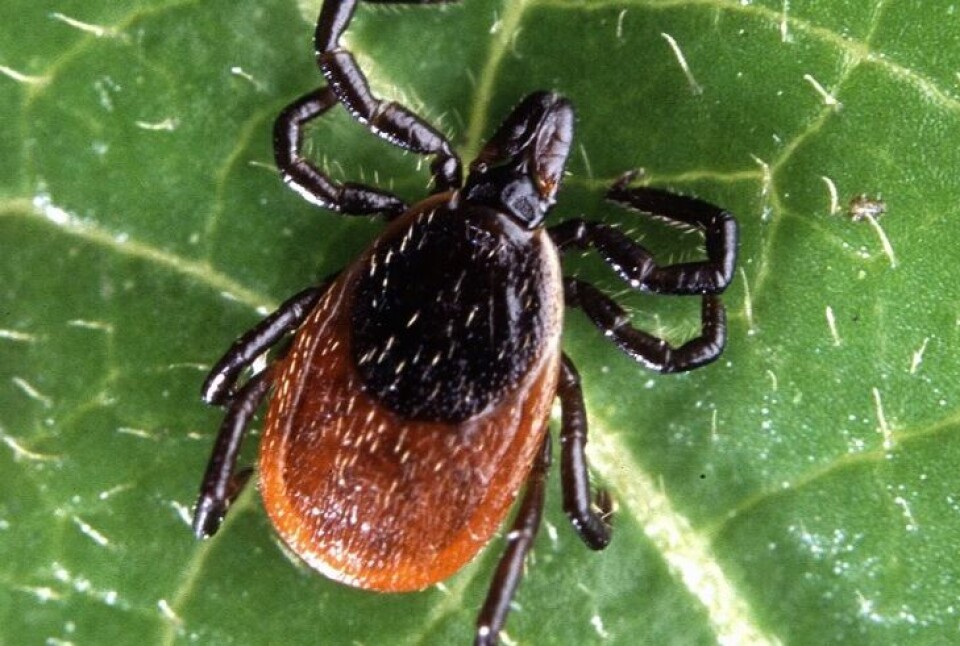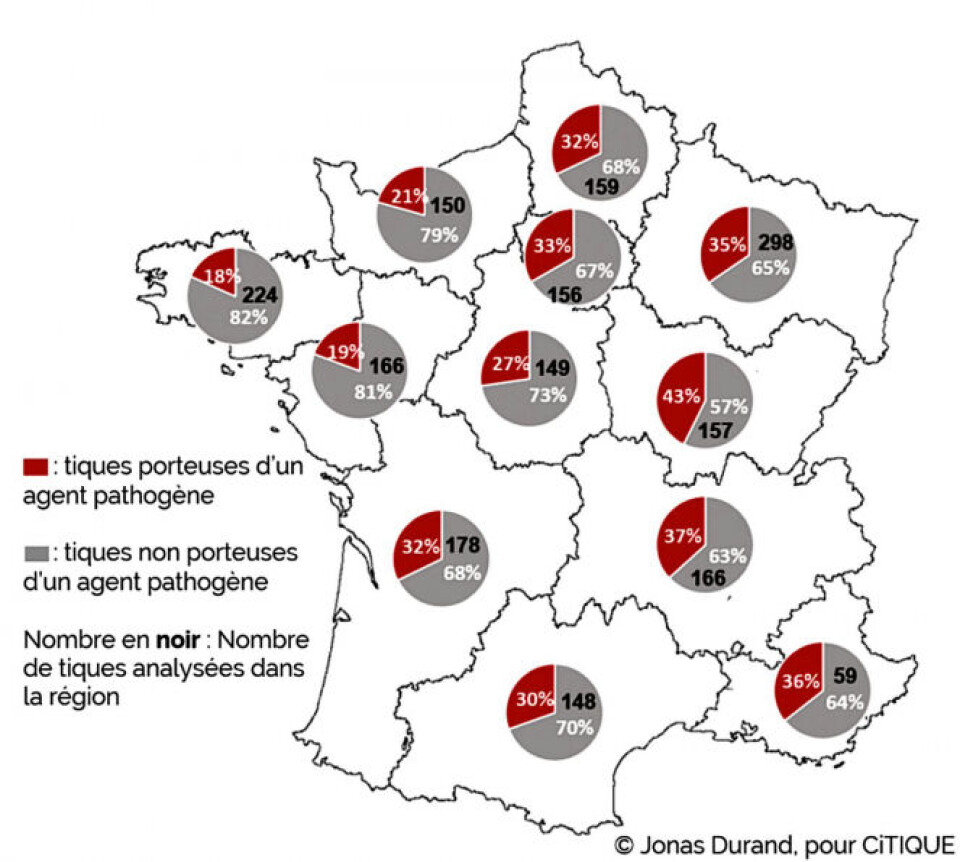-
France targets imports from South America over banned chemical concerns
Avocados, mangoes, and cherries among food items set to be tested before entry
-
Environment and ecology: What's new in France in 2026
Changes include a ban on microplastics, the future of ZFE low-emission zones for drivers and new offshore wind farms
-
How to dispose of your Christmas tree in France in 2026
Dumping an old tree on the pavement, in a park or in woodland is illegal, and can result in a fine
Where in France you are most at-risk from Lyme disease ticks
An initiative to track and stop the spread of pathogenic ticks found forest areas are the most likely locations but that more people are also being bitten in their gardens

In France, an estimated 15% of ticks are carriers of Lyme disease; with the majority of cases recorded in Grand Est, Bourgogne-Franche-Comté, Auvergne Rhône-Alpes and Nouvelle Aquitaine.
There were 50,133 new cases of Lyme disease reported in mainland France in 2019, figures from research programme CiTIQUE* show.
Its figures show that 15% of ticks in France carry Lyme, and that 14% of ticks carry other pathogenic agents that could be harmful to humans and animals.

Legend: Red - Ticks carrying pathogens. Grey - Ticks not carrying pathogens. Black number - Number of ticks analysed in the region. (Credit: Jonas Durand, for CiTIQUE)
Forest areas are most likely to harbour ticks, but the insects can also be present in normal gardens, and this kind of bite appears to be on the rise.
Between 2017-2019, 28% of people bitten said it had happened in a garden. This rose to 47% between April-March 2020.
Lyme disease is often known as an “invisible disease”, and can affect anyone. It is transmitted by tick bites, which are carriers of the bacteria Borrelia burgdorferi sensu lato.
It can cause muscle spasms and paralysis, intense migraines, fever, dizziness, fatigue, and balance problems. Its symptoms often appear similar to those of other conditions, making it difficult to diagnose.
Some doctors even still disagree on the extent of the condition and it is often confused for psychological problems.
Advice to help avoid tick bites includes:
- Use an anti-tick spray
- Wear long, light-coloured clothing to cover excess skin and allow you to see ticks if they appear
- Make sure children wear hats, especially if they are playing in grass or have their head near tall bushes and grasses
- When you return from outside, wash your clothes at 60C, or tumble dry them for at least an hour, as ticks do not like dry heat
- Carefully check your skin, especially in folds of skin or private areas, to check there are no ticks
- Check the fur or skin of pets too, as they can become tick ‘hosts’ and bring them indoors
If you do suspect or know you have been bitten, you are advised to:
- Pull the tick ‘head’ off with tweezers, taking care to remove it in one quick movement, without crushing its body or head
- Check the tick bite area of your skin and stay alert to your general health and any symptoms over the next month; tick bites that cause Lyme can often lead to a “bull’s eye” red ring around the bite
- Ask a health professional to remove the tick as soon as possible if you are not able to remove it yourself
- Request preventative antibiotic treatment against Lyme disease within the next 24-48 hours, from your nearest doctor or health professional, to avoid developing the disease long-term
Tick geography
*CiTIQUE is an initiative founded in 2017 as part of the national plan against Lyme disease.
It is run by the food and agriculture agency l’Institut national de recherche pour l’agriculture, l’alimentation et l’environnement (Inrae), health and environment agency l’Agence nationale de sécurité sanitaire de l’alimentation, de l’environnement et du travail (Anses), and the Ministry of Health.
It works to gather geographical information on the spread of ticks and the pathogens that they carry, and partly operates via an app - Signalement Tique - that allows users to report a bite for free.
Members of the public can also report a bite online or via a paper form. You can download the app on Android and iOS, report online or download a paper form, and find out more about the initiative, on the website here (in French).
You can even send the tick that bit you to CiTIQUE by post, to allow researchers to learn more. All reports are anonymous and no individual test results can be sent back, but the reports help to improve the researchers’ data.
Related stories
New campaign to alert walkers to risk of Lyme disease in France
Be aware: tick bites can cause Lyme disease, says survivor
British-French skier's three-year Lyme disease battle
























